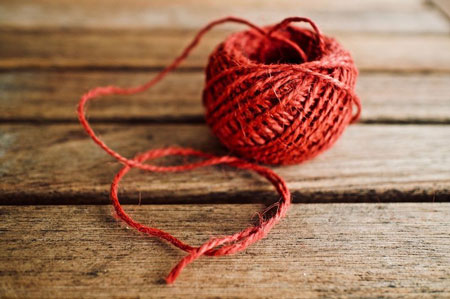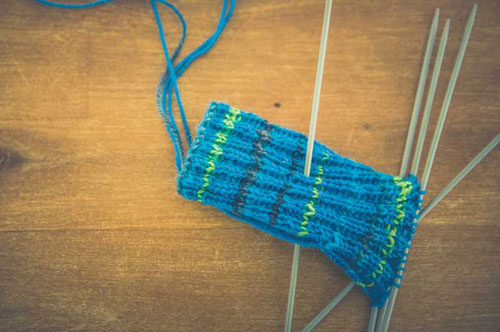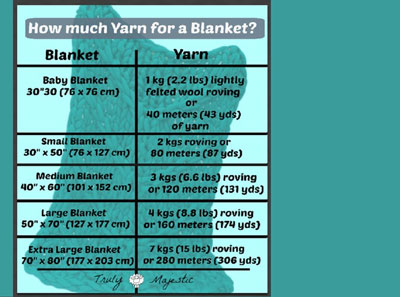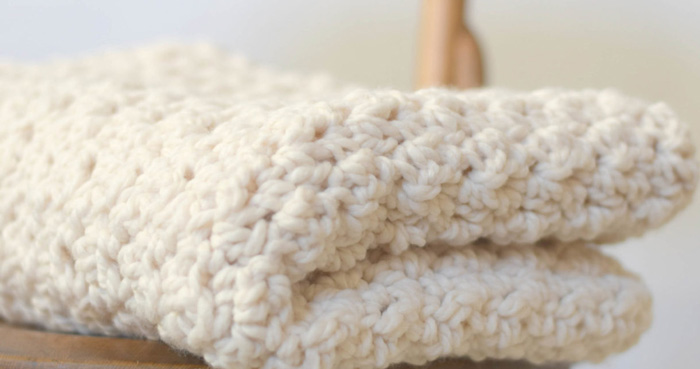Crochet is a versatile and fun hobby that can be enjoyed by everyone. Blankets are one of the most popular crocheting projects for both beginners and experienced crocheters.
It gets even better when you think of the countless patterns out there that’ll help you pick the one you like.
Before you can start crocheting that blanket, however, it’s important that you know how much yarn you’ll need for the entire project.
This will help you buy enough yarn at once. The rest of this post will show you how to easily determine the amount of yarn you need to complete any blanket pattern.
How Much Yarn Do I Need To Crochet a Blanket?

Before we get into more intricate details, let’s understand how crocheting yarn is measured for the sake of beginners in the house.
The amount of yarn you need for a project is measured in terms of yards…you’ll hear crocheters referring to the amount of yarn as the yarn yardage.
In simpler words, the question “how much yarn do I need to crochet a blanket” means the same as “what yarn yardage do I need to crochet a blanket.”
So, how many yards are in a skein of yarn?
Since the yarn is always sold in weight, and not length, determining the number of yards in a skein of a ball of yarn can be a challenge. However, the estimate on the yarn package can help you determine the yarn yardage.
Got it?
Good…now we can carry on with our main business of calculating the amount of yarn you need for your blanket project…
TIPS FOR DETERMINING HOW MUCH YARN YOU NEED:

- weight of the yarn used: the higher the yarn weight, the less the yarn skeins/yards you’ll need
- The size of item you’re crocheting: we all know that blankets come in different sizes. There are baby blankets (infant receiving, crib, and toddler blankets; all these have varying sizes), adult blankets, lap blankets, etc.
- Type of stitches: the type of stitches you’ll be using in your pattern will also affect how much yarn you use as different stitches require different yarn amounts. For instance, single crochet will use less yarn than the bobble stitch.
- Size of hook: using a different size hook in your pattern will mean changing the size as the stitches get farther apart or closer together.
- Gauge and tension: check the recommended gauge in your pattern. This will determine how much yarn you use in the sense that it’ll allow for less or more space between your stitches.
This yardage yarn chart (PDF version) from All Free Crochet will help you easily estimate the yardage of yarn for your blanket and other common crochet projects easily and quickly.
Example:
DETERMINING THE AMOUNT OF YARN FOR YOUR BLANKET PATTERN…

Let’s say you’re working on a baby blanket pattern. In most cases, the pattern will give you information such as the size of the blanket as well as the number of skeins to use.
If this information isn’t provided, however, you can use this information to approximate the amount of yarn you need for the job:
Small baby blankets usually use only one skein of yarn. And the bigger blankets take up around 3-4 skeins of yarn. Also, most baby blanket patterns use worsted or bulky yarns, meaning you’ll use approx. 900–1500 yards of yarn (according to the above chart).
What if you’re making a full-size (adult) blanket? In most cases, you’ll need around 13-18 balls or skeins of yarn.
From our chart above, you’ll need approx. 2000–4000 yards, depending on the factors we’ve outlined earlier, such as the weight of yarn, size, and the number of colors in your pattern.
Final Word
Knowing how much yarn you’ll need to use to complete your blanket project is important as it’ll help buy just enough amount of yarn in advance.
As we’ve said above, the amount of yarn you need, or simply the yardage, will depend on a number of factors such as the size of your blanket, the weight of yarn in use, hook size, size of stitches, and the gauge and tension.
Use the attached yarn yardage chart to help you easily estimate how much yarn you need for your project based on these factors.

